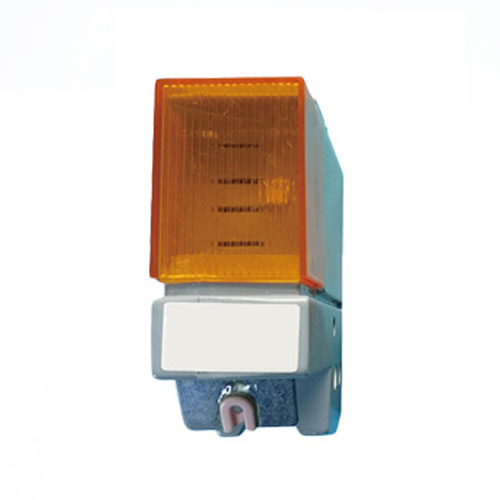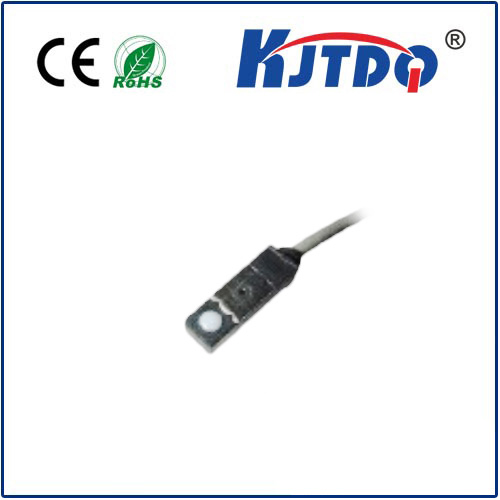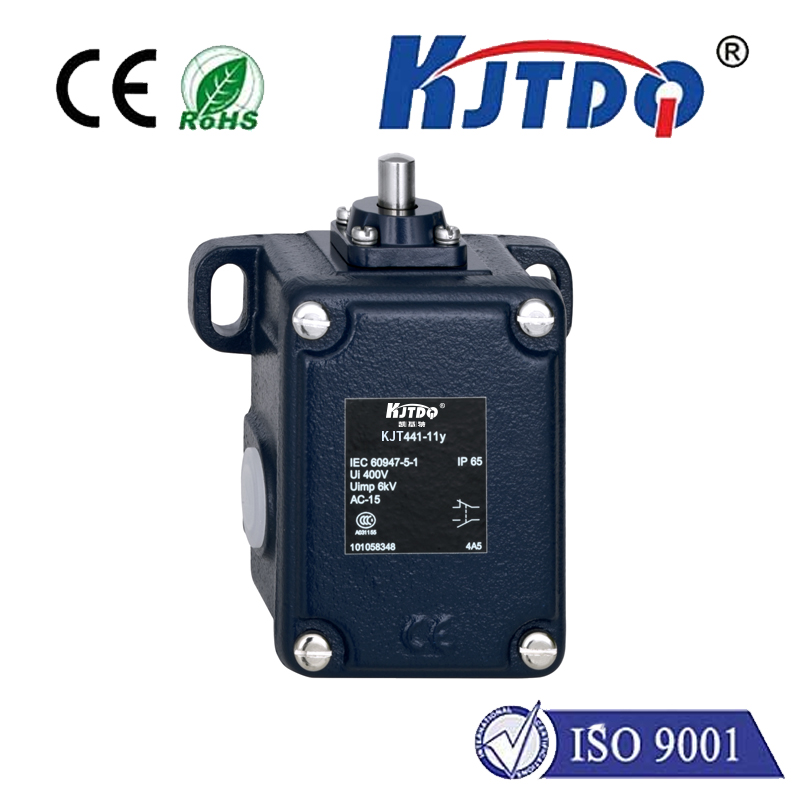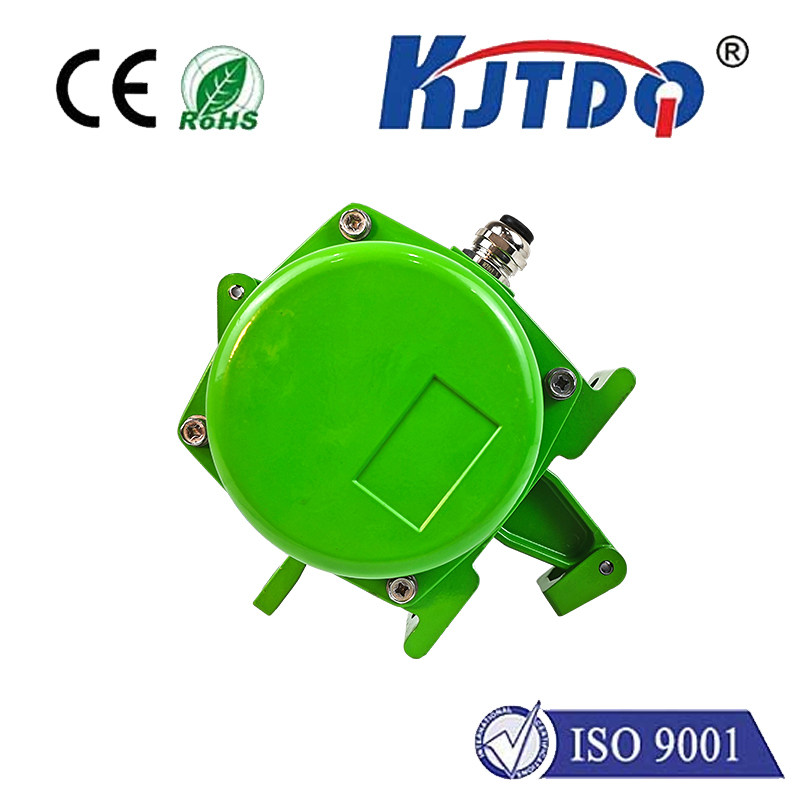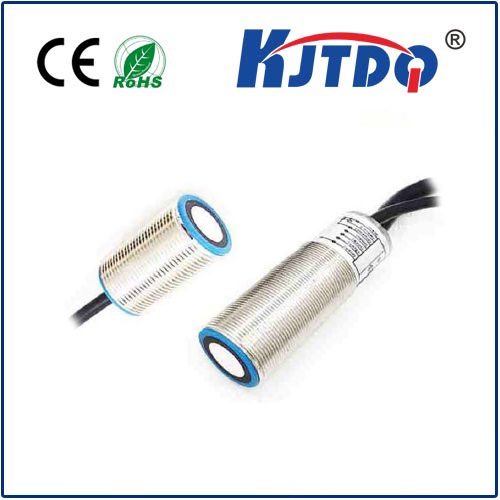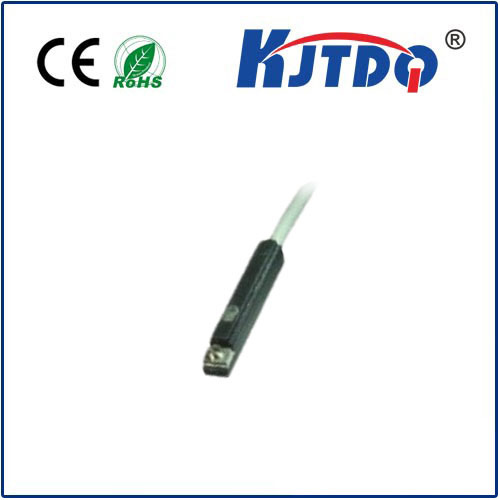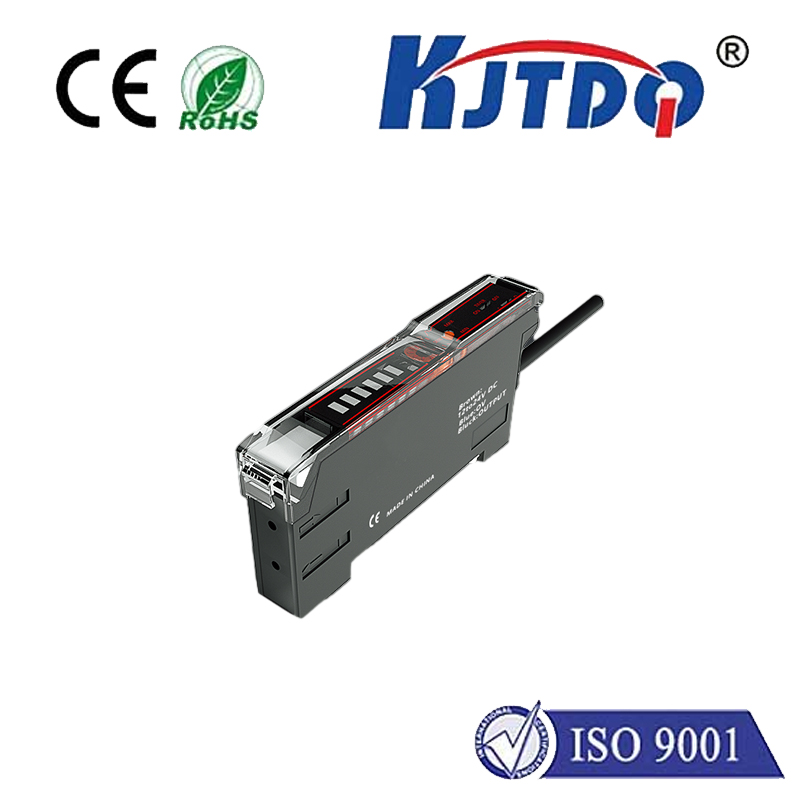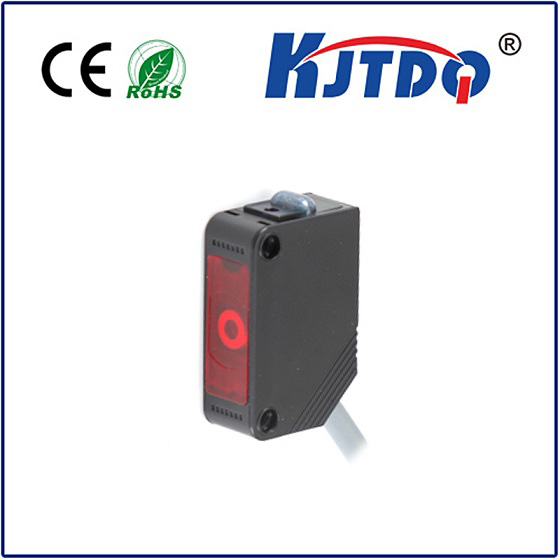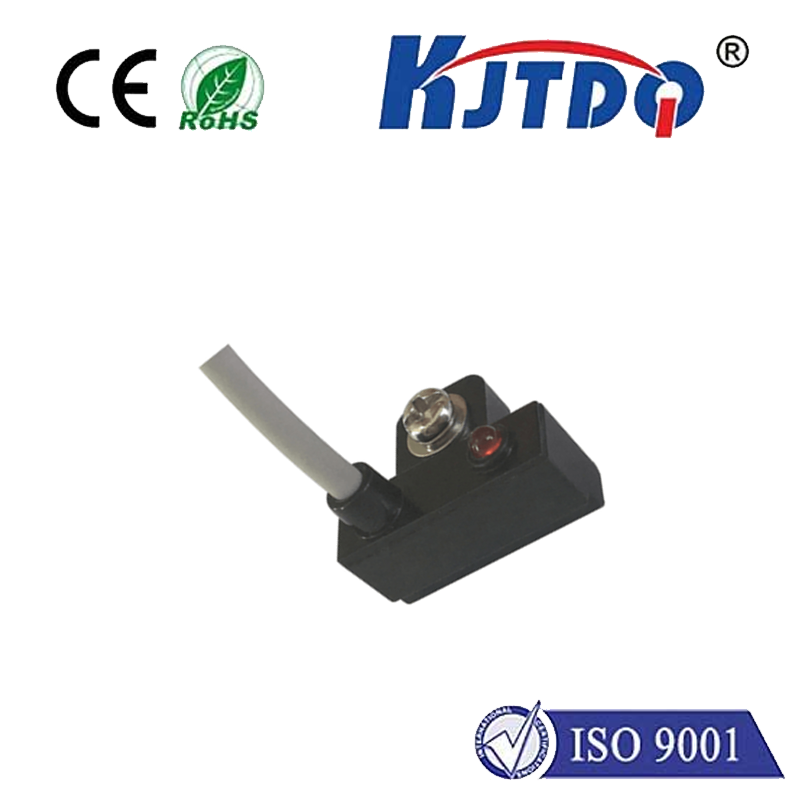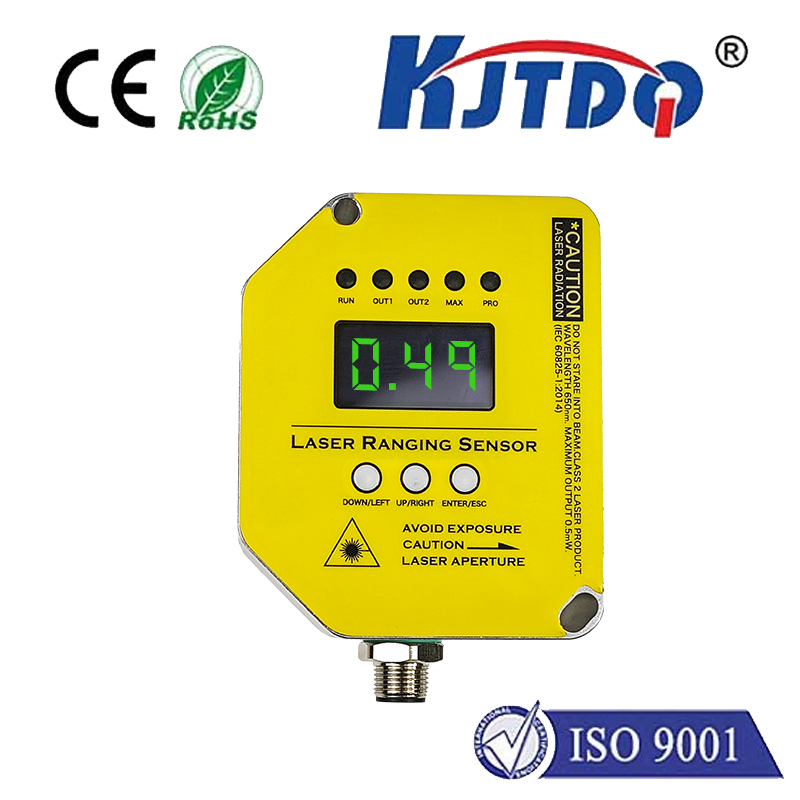Вилочный лазерный датчик
- time:2025-07-24 00:15:22
- Нажмите:0
Laser Fork Sensors: Pinpoint Accuracy in Object Detection & Positioning
Imagine a world where automated processes stumble because a critical component position is misread, or a defective product slips through undetected. This is the costly reality many industries faced before the advent of sophisticated photoelectric sensing, particularly the highly specialized Вилочный лазерный датчик. More than just a sensor, this ingenious device represents the pinnacle of precision object detection and measurement, enabling modern automation to achieve unprecedented levels of reliability and efficiency.
Understanding the Laser Fork Sensor
At its core, a Вилочный лазерный датчик is a type of Фотоэлектрический датчик housed in a distinctive U-shaped or fork-like configuration. One arm of the fork contains a powerful laser emitter, while the opposite arm houses a highly sensitive receiver. This physical separation creates a precise, clearly defined detection zone within the gap between the tines. Unlike diffuse sensors relying on reflected light, the fork sensor operates on the through-beam principle: an object is detected only when it physically interrupts the tightly focused laser beam traveling directly from the emitter to the receiver.
How It Achieves Unmatched Precision
The magic lies in the combination of laser technology and the fork design:

- Focused Laser Beam: The laser diode generates an intense, coherent, and highly collimated light beam. This results in an extremely narrow, intense beam that maintains its focus over longer distances compared to standard LEDs used in other photoelectric sensors. This minimizes beam spread and false triggers.
- Through-Beam Principle: With the emitter and receiver separated, the sensor doesn’t rely on the reflective properties of the target object. It simply detects the presence or absence of the beam. This makes it immune to variations in target color, surface finish, reflectivity, or texture. A matte black object is detected as reliably as a shiny metal one.
- Pinpoint Accuracy: The combination of the narrow laser beam and the fixed physical gap defines an exceptionally precise detection point. This allows for the detection of extremely small objects, precise edge detection, and highly accurate position verification or part dimensioning.
- High Speed & Stability: Laser diodes operate at very high speeds, enabling detection of rapidly moving objects on high-speed production lines. The through-beam principle also provides superior immunity to ambient light interference, ensuring stable operation even in challenging lighting conditions.
Key Advantages Driving Adoption
Why are laser fork sensors the preferred choice for demanding applications? Their unique design offers compelling benefits:
- Unparalleled Object Detection Reliability: Consistent performance regardless of target color, shape, or surface characteristics. Problems like missed detections or false positives become exceedingly rare.
- Exceptional Precision: Capable of detecting minuscule objects, verifying fine positional tolerances (e.g., verifying pin insertion), or measuring small gaps and diameters with high repeatability. Accuracy down to micrometer levels is achievable.
- Robust Performance in Harsh Environments: Many models are built to withstand industrial rigors – dust, dirt, oil, coolant mist, and vibrations have minimal impact on the laser beam’s integrity compared to reflective methods. IP67 or higher ratings are common.
- High-Speed Operation: Essential for modern manufacturing processes where components move swiftly down conveyor lines or through assembly stations.
- Simplified Setup: The fixed gap inherently defines the detection zone, making alignment generally straightforward. Contrast this often with the painstaking alignment required for separate emitter/receiver through-beam sensors.
Laser Fork vs. Other Photoelectric Sensors: A Quick Comparison
| Особенности |
Laser Fork Sensor |
Diffuse Sensor |
Retro-Reflective Sensor |
Separate Through-Beam |
| Principle |
Through-Beam (Fixed Gap) |
Reflectance (Target) |
Reflectance (Reflector) |
Through-Beam (Separate) |
| Target Reliance |
Low (Beam Break Only) |
High (Reflectivity/Color) |
Medium-High |
Low (Beam Break Only) |
| Точность |
Very High |
Low-Medium |
Medium |
High (Alignment Sensitive) |
| Small Objects |
Excellent |
Poor |
Poor-Medium |
Excellent |
| Ambient Light |
High Immunity |
Susceptible |
Susceptible |
High Immunity |
| Alignment |
Simple (Fixed Gap) |
Simple |
Medium (Align to Reflector) |
Complex (Align Tx/Rx) |
| Harsh Env. |
Very Good |
Poor (Dust/Contaminants) |
Medium (Dirty Reflector) |
Good (If Protected) |
Vital Applications Across Industries
The unique capabilities of laser fork sensors make them indispensable in numerous sectors:
- Manufacturing & Assembly: Verifying presence/absence of tiny components (springs, pins, seals), detecting missing drill holes, checking orientation of parts, confirming correct positioning before robotic pick-and-place, ensuring precise label or cap placement, counting small items (pills, electronic components), and dimensional checking (e.g., wire diameter, component height).
- Packaging & Filling: Monitoring fill levels in transparent containers (where ultrasonic/capacitive struggle), detecting missing caps or lids, verifying correct carton or tray formation, checking for labels on products, and detecting overlapping or missing items on conveyors.
- Printing & Converting: Precise web break detection on fast-moving paper, film, or foil, monitoring registration marks for accurate printing/cutting, detecting splice tape on rolls, and verifying cut lengths.
- Logistics & Material Handling: Detecting packages or totes on high-speed sorters, verifying pallet presence/positioning, counting boxes on conveyor lines, and ensuring proper spacing between items.
- Electronics & Semiconductor: Handling and verifying placement of ultra-small components, inspecting PCBs for component presence and soldering defects (in specific setups), and wafer positioning.
- Automotive: Verifying the insertion of connectors or pins, detecting assembly errors (e.g., missing gasket), checking fluid levels in sight tubes, and confirming part position before welding or riveting.
Selecting the Right Laser Fork Sensor: Key Considerations
To maximize performance, consider these factors:
- Fork Gap Size: Choose a gap slightly wider than the largest object to be detected or measured to ensure clearance.
- Object Size/Detection Task: Specify the smallest object or feature needing detection. This determines the required beam width and sensor precision.
- Operating Environment: Assess exposure to dust, moisture, chemicals, temperature extremes, and potential physical impacts to ensure the chosen model’s IP rating and construction materials (often stainless steel) are adequate.
- Required Speed: Ensure the sensor’s response time is fast enough for the application’s cycle rate.
- Output Type & Connectivity: Select the appropriate electrical interface (PNP/NPN, N.O./N.C.) and connection type (cable, connector) for your control system. Some offer IO-Link for enhanced diagnostics and parameterization.
- Beam Configuration: Standard single-beam sensors are common. For detecting transparent objects (glass, clear plastic) or very small opaque objects, consider models with modulated or multi-beam arrays (e.g., 3 or 5 beams within the fork) which significantly boost detection reliability. Multi-beam laser fork sensors are often essential for reliably sensing challenging transparent targets.
The Indispensable Tool for Modern Precision
Laser fork sensors are far more than a niche component; they are fundamental enabling technology for the accuracy, speed, and reliability demanded by

